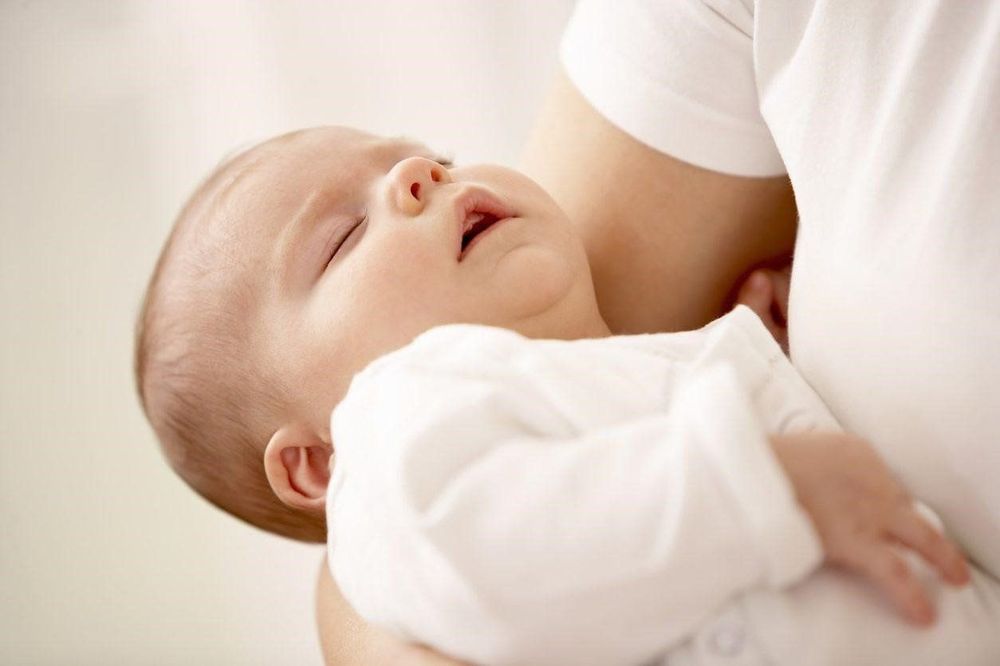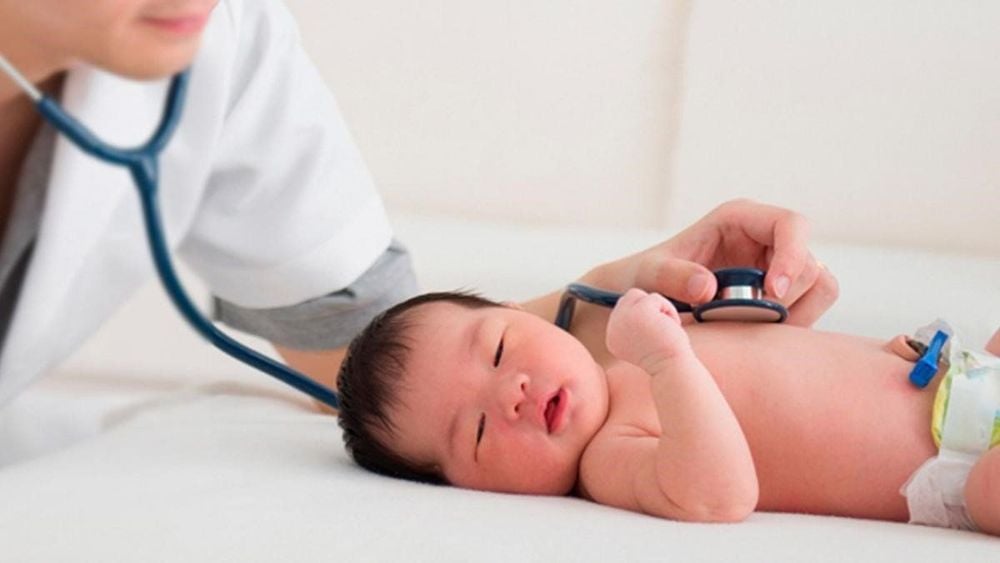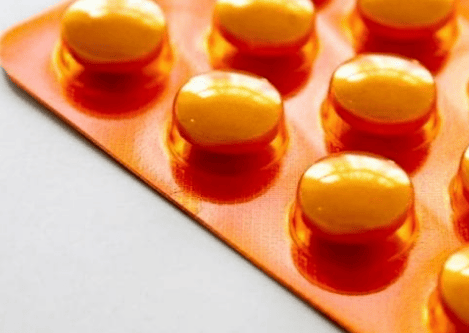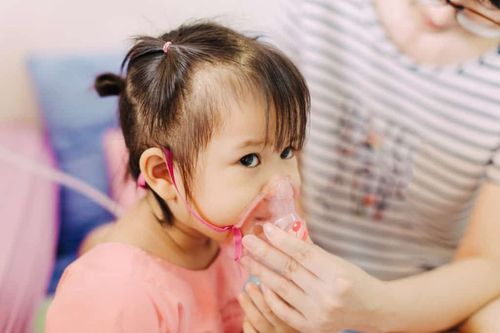This is an automatically translated article.
The article is professionally consulted by Master, Resident Doctor Dang Thi Ngoan - Pediatrician - Neonatologist - Department of Pediatrics - Neonatology - Vinmec Ha Long International Hospital.Signs of pneumonia in infants are often more difficult to recognize, but the level is more dangerous because the child's health and resistance are still very weak. Therefore, parents need to master knowledge about pneumonia for early detection and timely treatment.
1. Causes of pneumonia in babies
When an infant or child has pneumonia, the first cause parents often think of is cold weather. However, this is only one factor, there are many other possible causes that lead to this disease very early.
Newborn pneumonia is mainly caused by bacteria such as Listeria, Coli, Gram-negative bacteria. Pneumonia in infants can occur before, during or after birth, closely related to the time before the water breaks before delivery.
Specifically:
Time to break water from over 6 hours to 12 hours before birth: 33% of babies have pneumonia. Amniotic fluid rupture from more than 12 hours to 24 hours before birth: 51.7% of children have pneumonia. Water breaks more than 24 hours before birth: 90% of babies have pneumonia. During delivery, postpartum resuscitation and newborn care also need to be aseptic, otherwise the newborn is very susceptible to infection from tools, the environment, and caregivers. Newborns can get pneumonia from inhaling infected amniotic fluid, meconium, or secretions from the mother's genital tract when the baby is about to be born. In addition, another cause of pneumonia in newborns is the lack of oxygen in the womb. Therefore, during pregnancy, the mother must periodically check, especially in the last stage, to detect this condition early and take timely intervention measures. In addition, underweight infants due to incomplete esophageal reflexes and irregular muscle movements are prone to gastroesophageal reflux, causing milk to be mistakenly inhaled into the lungs, causing symptoms. shortness of breath, shortness of breath, pale eyes. The more milk inhaled, the more severe the symptoms, which can cause pneumonia.
Children with diseases such as dermatitis, inflammation of the oral cavity, inflammation of the umbilical cord can also lead to pneumonia.
Trắc nghiệm: các chỉ số cần chú ý về sự phát triển thể chất của trẻ
Chiều cao, cân nặng của bé ở từng giai đoạn nên là bao nhiêu là bình thường, bao nhiêu là bất thường? Cùng ThS.BS Ma Văn Thấm điểm lại xem bạn đã nắm được các chỉ số phát triển thể chất của bé chưa nhé!The following content is prepared under supervision of Thạc sĩ, Bác sĩ y khoa, Ma Văn Thấm , Nhi , Phòng khám Đa khoa Quốc tế Vinmec Dương Đông(Phú Quốc)
2. Signs of pneumonia in babies
Signs of pneumonia in infants at first are often poor, unclear, so it is difficult to recognize.Parents need to pay attention if the child has the following signs:
Poor suckling or skipping feeding Fever over 37.5oC or hypothermia; Rapid breathing more than 60 times in 1 minute or shortness of breath.

Children can detect sound breathing through the following indicators:
Children from 1-5 years old, breathing 40 times in 1 minute or more; Children from 2 months to 1 year old, breathing 50 times in 1 minute or more; Children under 2 months old, breathing 60 times in 1 minute or more. Also known by other means, parents lift up the child's shirt and look at the chest. If you see that the child is breathing abnormally, when breathing makes an abnormal sound, it is possible that the child has pneumonia.

Besides, parents should also observe the boundary between the chest and abdomen to see if there are signs of indentation when the child inhales or not? To watch for this cue, hold the baby horizontally on the mother's lap or lay the baby horizontally on the bed. This phenomenon if seen frequently at any breathing rate of the child, when the child is lying still or asleep is valid, but only seen when the child is fussy or trying to take a deep breath is not considered a thoracic contracture. Accordingly, if the child has chest tightness, it means that he has severe pneumonia, the child should be taken to the hospital for treatment immediately.
Thus, the signs of pneumonia in infants are very vague, in each case it is different, so parents need to be very careful. When detecting strange signs of the child, it is necessary to take the child to the doctor for examination and timely treatment.
As a key area of Vinmec Health system, Pediatrics Department always brings satisfaction to customers and is highly appreciated by industry experts with:
Gathering a team of top doctors and nurses in Pediatrics : consists of leading experts with high professional qualifications (professors, associate professors, doctorates, masters), experienced, worked at major hospitals such as Bach Mai, 108.. Doctors All doctors are well-trained, professional, conscientious, knowledgeable about young psychology. In addition to domestic pediatric specialists, the Department of Pediatrics also has the participation of foreign experts (Japan, Singapore, Australia, USA) who are always pioneers in applying the latest and most effective treatment regimens. . Comprehensive services: In the field of Pediatrics, Vinmec provides a series of continuous medical examination and treatment services from Newborn to Pediatric and Vaccine,... according to international standards to help parents take care of their baby's health from birth to childhood. from birth to adulthood Specialized techniques: Vinmec has successfully deployed many specialized techniques to make the treatment of difficult diseases in Pediatrics more effective: neurosurgery - skull surgery, stem cell transplantation. blood in cancer treatment. Professional care: In addition to understanding children's psychology, Vinmec also pays special attention to the children's play space, helping them to have fun and get used to the hospital's environment, cooperate in treatment, improve the efficiency of medical treatment. Doctor Dang Thi Ngoan used to be a lecturer in the Department of Pediatrics - Hai Phong University of Medicine and Pharmacy. Having been granted certificates in Pediatrics at home and abroad such as: Westmead Hospital, Australia; Hai Phong Medical University. Currently, Doctor Ngoan is a pediatrician - neonatologist at the Department of Neonatology at Vinmec Ha Long International Hospital.
Please dial HOTLINE for more information or register for an appointment HERE. Download MyVinmec app to make appointments faster and to manage your bookings easily.















